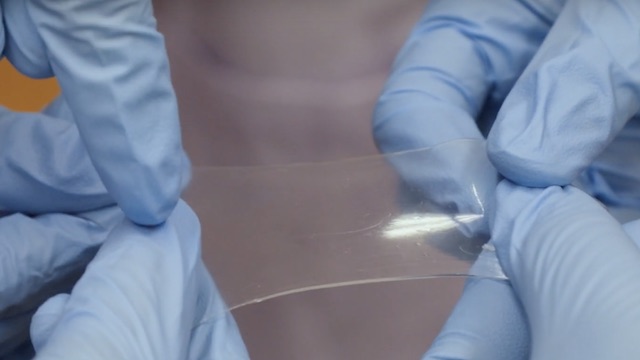
Researchers at the National University of Singapore (NUS) have created a new type of electronic skin that has a vast array of different features. Based off of the structure of underwater invertebrates, scientists designed a skin that is self-healing, stretchable, touch-sensitive, and transparent in aquatic environments. Scientists believe it will have an extensive range of applications, including in aquatic soft robots and water-resistant touch screens.
After observing jellyfish and how they operate in an aquatic environment, scientists designed a gel made out of fluorocarbon-based polymer combined with a fluorine-rich ionic liquid. The two materials engage in a series of reversible ion-dipole interactions, thanks to the polymer network reacting to the ionic liquid. This is what allows the skin to self-heal, just like a jellyfish would in nature.
To make this remarkable new material, scientists printed the novel material into electronic circuits. Because the material is both stretchable and soft to the touch, the electronic properties it possesses can change if it is touched or pressure is applied to it in any way.
“The 3D printability of our material also shows potential in creating fully transparent circuit boards that could be used in robotic applications. We hope that this material can be used to develop various applications in emerging types of soft robots.”
Scientists believe this new technology has the potential to significantly reduce waste, in the form of self-repairing electronics. Instead of people simply throwing out a damaged phone or laptop, the device would just self-repair — enabling devices to have a considerably longer lifespan.
And that’s just one of the potential applications for this invention. Its waterproof nature means it could be used to create an assortment of devices that can function perfectly underwater, which could help with undersea research.
There are also extensive medical applications for this new electronic skin. Soft robotics attempt to imitate organic material, which allows for medical devices to be seamlessly joined with the human body. The unique properties of this electronic skin mean it could be used to help build man-made organs that work so well the body can barely tell the difference.
For now, scientists are working on designing novel optoelectric devices. They hope this next phase in their experimentation will lead to improved human-robot communication interfaces — yet another application for their new electronic skin.